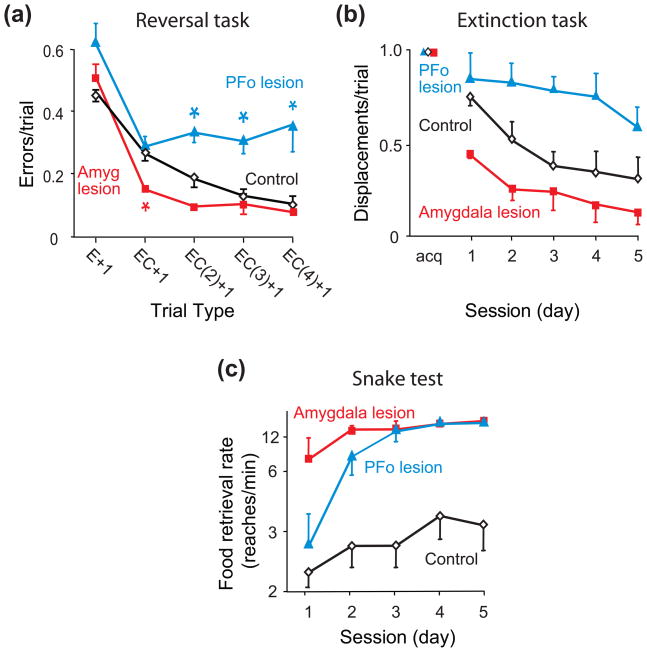Figure 2.
Amygdala and PFo contributions to three behavioral tests in macaque monkeys. (a) Serial object-reversal learning [10••]. In this task, monkeys chose between two objects, and only one choice produced a food reward. The choice that did so changed periodically. Across a series of such reversals, monkeys with bilateral lesions of orbital prefrontal cortex (PFo) benefited less than controls after two, three or four correct (C) choices following an error (E) [EC(2)+1, EC(3)+1, and EC(4)+1 trial types, respectively]. Monkeys with bilateral amygdala (Amyg) lesions benefited more than controls when an error trial was followed by a single correct choice (EC+1 trial type). *, significantly different from controls. (b) Extinction. Monkeys first learned to displace a single object to obtain a food reward hidden underneath. After five consecutive days of consistently displacing the object to obtain food reward (acquisition, acq), object displacement failed to produce food over the next five days [12]. (c) Snake test. Food-retrieval rates when monkeys had to reach over a rubber snake to retrieve food [13]. Amygdala lesion group differed significantly from controls on all five sessions, whereas PFo group differed from controls on sessions 3–5 only. The fastest retrieval rates matched closely the times for reaching over neutral objects. Error bars: SEM.

